Of all the lenses a camera owner needs, the dedicated wide-angle lens is not always the first choice. Kit lenses usually offer a wide-angle field of view down to 18mm (27mm full-frame equivalent), but sometimes it’s nice to be able to go even wider.
Strictly speaking, anything under the standard full-frame equivalent of 35mm is considered “wide-angle” because it encompasses a view somewhat larger than that of normal human vision. If you’re using an APS-C, then you’ll quickly start to understand why they’re known as “cropped” sensors.
Crop factor comes into play here if you’re using one of Canon’s many APS-C sensor cameras. With a 1.6x crop factor, a 28mm lens on your T7i is actually a 44.8 mm full-frame equivalent. Therefore, it is not a truly wide-angle lens.
Wide-angle lenses offer an expanded field of view that’s great for landscapes, architecture, street, nature, and event photography. It creates a sense of place and space around the main subject that gives excellent context for a given image. Canon users are spoiled for choice, and there are plenty of great options to look over.
But where to begin in the search for the perfect Canon wide-angle lens?
What should I be looking for in a Wide-Angle Lens?
Focal Length
The focal length is what determines whether a lens classifies as wide-angle or not. As stated earlier, anything under 35mm full frame field of view can be considered a wide-angle lens. Even the humble kit lens can tap into wide-angle territory.
Lens focal length will vary depending on whether it is a zoom or a prime lens. Prime lenses have a fixed field of view; you “zoom” by moving yourself around as needed. Zoom lenses can adjust between a specified focal range.
Prime lenses tend to be cheaper than zoom lenses. They also have optics optimized for a given focal length for superior image quality. Generally, high-quality modern zoom lenses can match primes for a given focal length but will still be more expensive and usually have slower apertures (see below).
One good way to determine whether you need a zoom is to examine the EXIF data of your favorite images. Frequently you’ll see a trend, maybe 27mm tends to pop up more often than not, giving you an idea of what focal range to shop for.
If you’re a landscape photographer or astrophotographer looking for the most expansive field of view possible, then try to get close to 10mm. If you’re a street, event, or nature photographer, you can likely use anything below 35mm and still capture your subjects as well as background for context.
A zoom lens may be a better bet to catch the moment precisely, rather than being constrained by a given focal length. The exact focal length you buy depends on your needs as a photographer.
Maximum Aperture
How “fast” the aperture is will determine how large the hole that allows light to strike the image sensor is. The smaller the f/number, the larger the hole is. And the larger the hole, the more light is allowed to reach the sensor and generate an image.
How much aperture you want or need is determined by your subject choices and your creative intentions. Aperture determines the depth of field, which is an essential aspect of the exposure triangle.The larger your aperture, the shallower your depth of field (the zone that’s in sharp focus) becomes.
When people think of wide-angle photography, they usually think landscapes. Therefore, since we want as much of our field of view in focus as possible, lenses with narrower apertures like f/3.5 or higher are fine choices. When the lighting gets challenging, using a slower shutter speed for a tripod long exposure will ensure you still get a nicely exposed image.
But if you’re looking for a different use of a wide-angle view on a subject, then a faster aperture may be called for. Astrophotographers need wider apertures as well to collect enough light during a long exposure for a sharp image with good lighting. Anything slower than f/2.8 will be challenging for capturing stars at night because the stars move with the earth’s rotation and will start to blur over time.
Brand
Canon lenses are renowned for their sharpness, color fidelity, and IS (image stabilization) systems. IS is less important on wide-angle lenses compared to telephotos because the focal length is so short. But it’s still convenient if using a high-resolution sensor or slow shutter speed to prevent motion blur from ruining your image resolution. Buying native Canon lenses means you’ll never have to worry about a lens not performing as intended.
Sigma and Tamron are the two main third-party manufacturers for Canon’s mount. Truly, Canon users are spoiled for choices when it comes to lens selection. You can find almost any focal length and aperture combination for your Canon body.
Canon full frame lenses are fully compatible with APS-C bodies, in case there’s a lens you like or a special on hand. The reverse isn’t true, however, because the APS-C lens creates an image circle that’s too small for the full frame sensor. The lens will mount, but you’ll see severe vignetting (darkening of the borders) around your image.
Several Chinese manufacturers like Laowa, 7Artisans, and Mitakon, as well as the Korean company Rokinon/Samyang, have come out with inexpensive manual focusing prime lenses for the Canon ecosystem. Their wide-angle options include the fantastic 9mm Laowa f2.8 as well as the Rokinon 10mm f2.8 and 12mm f2.0.
Many people can’t stand manual focus lenses (despite being the norm for the majority of the history of photography) while others love it. For most wide-angle photography your depth of field is usually going to be so large that manual focusing is rarely an issue.
If you’re using a Canon camera with focus peaking, you’ll have even less trouble with manual focus. The fast apertures offered by many manual lenses combined with the low price point due to the lack of autofocusing motors makes them very attractive for the budget-oriented photographer. Your images do lack EXIF data, however, as they don’t have electronics that communicate with the camera.
The main criticism for these manufacturers tends to be lower quality control standards, especially 7Artisans, Meike, and the other super low budget manufacturers. Lenses may display focusing issues, like half the field of view not being in proper focus, chromatic aberrations, poor micro-contrast, and significant flare and purple fringing.
Common Issues with Wide-Angle Lenses
Wide-angle lenses have several problems unique to them. Barrel distortion commonly arises in wide-angle lenses, and particularly in wide-angle zoom lenses. If you’ve ever seen a fisheye photograph, then you’ll understand what barrel distortion is.
Straight lines in the image are grossly distorted and curved to varying degrees due to the extreme curvature of the glass elements used in wide-angle lenses. Fisheye lenses use a curvilinear design that can enhance this effect; most of the lenses here use a rectilinear design to keep lines as natural as possible, though some curvature is possible at the edges of the field of view.
While often used for an artistic effect, it can be distracting if you’re looking to preserve the original feel of the scene in question. When going super-wide, prime lenses have an easier time controlling barrel distortion and for less money compared to zoom lenses.
If you’re using a wide-angle known for creating significant barrel distortion, shooting scenes that don’t contain straight, rigid lines like buildings or horizons will help minimize the effects. Image editors like Photoshop also have distortion correction tools that can even de-fish the view created by fisheye lenses (which are often cheap compared to true wide-angle lenses and their anti-distortion corrections).
Polarizing filters are also more challenging when using ultra wide-angle lenses because the polarization effect is dependent on the angle of the sun to the camera. Because they capture such an expansive field of view, the polarization effect will vary across the field of view, creating a noticeable banding effect. Vignetting (darkening) of the sides of the frame is also common, especially when used at maximum aperture or the widest focal length.
Best Wide-Angle Zoom Lenses for Canon
APS-C Wide-Angle Choice: Canon EF-S 10-22mm f/3.5-4.5 USM
If you’re looking for a great balance of image quality, performance, and price in an ultra wide-angle the Canon EF-S 10-22mm wide-angle is one of the best choices on the market. Covering an excellent 10-22mm focal range, you have plenty of perspective to work with.
As an EF-S lens, it’s meant to APS-C sensors and won’t cover a full frame sensor. While the other ultra wide-angle lenses here show moderate softness at the far corners, both the 10-22 and Canon 18-18mm show strong performance across the image frame.
Like most ultra wide-angle lenses it does show noticeable vignetting (darkening of the borders) when shooting with a wide open aperture, but it disappears fairly quickly when stopped down or zoomed past 10mm. Given the relatively fast aperture and focal length, the EF-S 10-22mm f/3.5-4.5 is a excellent companion to your choice in walk-around 24-70mm f/2.8 or f/2.8-4 lens.
- 10-22mm wide-angle zoom lens with f/3.5-4.5 maximum aperture for EOS digital SLR cameras
- Superior AF performance and speed, with full-time manual focus with the turn of a ring
- Close focusing to 9.5 inches; fills the frame with subjects as small as 3.6 x 5.4 inches
- Circular aperture design produces natural highlights
- 1-year warranty
Runner Up: Canon EF-S 10-18mm f/4.5-5.6 IS STM
While you lose out on about a stop of light and 4mm of focal length on the far end of the range, the Canon 10-18mm goes for about half the price of the above 10-22. The maximum 18mm focal length also dovetails nicely into kit lens 18-55mm range. The aperture does constrict quite quickly; f4.5 is the maximum aperture at 10mm and increases to f/5 right at 11mm.
An aperture range like this is clearly meant for well-lit scenes where you want the depth of field. As long as you aren’t shooting astrophotography or willing to use a tripod at dusk, you won’t miss the extra light too much.
The image stabilization also helps for low light shooting with slower shutter speeds. The two cameras are neck and neck in sharpness. Compared to the 10-22mm, the 10-18 is shorter and lighter (240 vs. 385 g) as well.
- EF S ultra wide zoom lens. Drive System Lead screw and rack system driven by stepping motor
- Focal Length and Maximum Aperture: 10 18 millimeter,1:4.5 5.6
- Closest Focusing Distance: 0.72 feet. / 0.22 meter
- Stepping motor for noise free video shooting
- Optical image stabilizer
Runner Up: Sigma 10-20mm f/3.5 EX DG HSM
With a constant moderately open aperture of f/3.5, this Sigma 10-22mm lens combines some of the best features of the two Canon models at a very reasonable price point. Constant aperture lenses are great to avoid having to make exposure adjustments as you zoom.
Wide open, the Sigma 10-20 shows slight loss of sharpness and noticeable vignetting in the corners of the image but remains sharp in the center, a trade-off given the aperture and price point. Like other wide-angle lenses, stopping down the aperture or increasing the zoom past 10mm will help correct this, as well as software corrections.
The simple fact is that it’s always challenging to create a sharp, wide-angle, fast aperture lens. Budget wide + fast models like the Tokina 11-16mm f/2.8 exist. But given this price point, some compromises had to be made.
Knowing how to work with those compromises means you’ll be able to play to the strengths of the lens without disappointment. That means knowing to stop down the aperture and using 11 or 12mm when you want corner to corner sharpness, for example.
- Ultra wide-angle of view with large maximum aperture of F3.5
- Sharp images with high contrast and superior peripheral brightness
- Super multi-layer lens coating reduces flare and ghosting
- Hyper Sonic Motor (HSM) ensuring silent, high-speed AF. Nikon mount built in motor lens: compatible with D40, D40x, D60, D3000, D5000
- Aspherical lenses perfectly correct coma aberration.Corresponding Mounts:Nikon HSM,EX,DC
Full Frame Wide-Angle Choice: Canon 11-24mm f/4L USM & Sigma 12-24mm f/4 (tie)
Remember that with an APS-C lens and body you’re experiencing a 1.5x crop factor over a full frame body. Therefore the EF-S 10-22 creates a 15mm equivalent field of view. Fortunately, Canon has one of the most mature lens selections on the market, and there are tons of full frame lenses to choose from.
If you’re looking for a true ultra wide-angle lens, you can’t do better than the Canon 11-24mm f/4. The f/4 depth of field on the full frame sensor is also equivalent to an f/2.8 on an APS-C, though you’re still losing out on some light gathering potential. The price point is the highest on this list, but if that’s no barrier, the 11-24mm f/4L is the best Canon wide-angle money can buy.
As an L (Luxury) series lens, it features durable metal and glass construction, high-quality optics and the fastest autofocus speeds. Edge to edge sharpness is also maximized, something particularly important when going for a wide-angle field of view.
This particular lens is also weatherized to prevent dust and moisture from penetrating the camera body, though only in conjunction with a weatherized body. All L-lenses fit Canon’s EF-mount and are also compatible with APS-C bodies.
For nearly $1000 less and a loss of 1mm of focal length, the Sigma 12-24 f/4 DG HSM Art lens is a solid contender for best ultra-wide constant aperture zoom. Both lenses show excellent sharpness across the frame for ultra-wide zoom lenses. 1mm of focal length is still a noticeable loss, and the Sigma Art is not weatherized, either.
- L-series ultra-wide zoom lens with an impressive 11mm starting focal length
- Focal Length & Maximum Aperture: 11-24mm f/4, Closest Focusing Distance : 11 in. / 0.28m
- New optical design and the use of one Super UD element and one UD lens element
- Subwavelength Coating (SWC) and Air Sphere Coating (ASC), Inner focusing, ring USM, a high-speed CPU and optimized AF algorithms
- Full-time manual focus allows manual focus adjustment while in AF Mode
- It allows photographers to enjoy the world of zero distortion that is ideal for landscape or architecture shooting.
- Continuing the tradition of the ultra wide angle range with incredible perspective, this new lens offers an optimal package.
- With F4 throughout the zoom range, it is one stop brighter than the previous model, allowing photographers to use faster shutter speed.
Alternative Choice: Canon 16-35mm f/2.8L III
This Canon 16-35mm is a high-priced, full-featured wide-angle lens which has a fast f/2.8 aperture for creating a shallow depth of field for isolating subjects in a narrow area of focus. F/2.8 also works nicely for low light shooting, including long exposure astrophotography.
While not nearly as wide as other full-frame lenses such as the Sigma 12-24mm f/4.5, the wide open constant aperture makes this one of the strongest contenders for your Canon wide-angle lens slot.
Other choices include the Canon 16-35mm f/4L (another Luxury lens) for about half the price, if you don’t need the low light or shallow depth of field performance but still want great edge-to-edge sharpness and superior L-series optics. Sigma's 12-24mm f/4.5-5.6 DG HSM creates a full-frame wide-angle view with a constricting slow aperture design to bring the price down.
Used copies of the venerable Canon 20-35mm f2.8 can also be used if a fast-aperture wide-angle zoom is what you need, though it’s starting to step on the toes of the 24-70mm f/2.8 slot most photographers want.
- High performance L-series ultra-wide-angle zoom lens with constant f/2.8 maximum aperture.
- All-new optical design for significant improvements in outer and corner sharpness.
- Sub wave length Coating (SWC) and Air Sphere Coating (ASC) help to significantly reduce flare and ghosting.
- Highly resistant to dust and water intrusion, enabling shooting even in harsh conditions.
- Circular aperture (9 blades) helps deliver beautiful, soft backgrounds. Not an Extender Compatiblity. Magnification with Extension Tube EF12 II- 0.65 at Tele (Not compatible at Wide). Magnification with Extension Tube EF25 II- 1.14 at Tele (Not compatible at Wide).Lens Construction:16 elements in 12 groups.Filter Size: 82 millimeter, P=0.75 millimeter/1 filter
Best Wide-Angle Prime Lenses for Canon
Best Canon Wide-Angle Prime Lens Choice: Laowa 12mm f/2.8 Zero-D Ultra-Wide
As the majority of Canon’s APS-C offerings are relatively narrow in field of view, we’re also including EF (full-frame) lenses as well to cover both the wide and ultra-wide spectrum.Laowa's 12mm is matched only by Rokinon’s 10mm and 12mm lenses but offers incredibly pleasing results, with distortion being practically non-existent.
The extremely wide-angle field of view makes it great for real estate and architecture applications as even the smallest space will appear massive at 12mm. Paired with an APS-C body, you achieve an 18mm field of view which is still far more than most of the Canon lenses on the market currently.
As a real estate/architecture lens, you’re going to expect corner-to-corner sharpness, meaning you’ll want to stop the lens down to around f/5.6 to f/8 for best results. At f/2.8 you’ll see some softening and vignetting, but that’s to be expected of any wide-angle fast aperture lens. F/2.8 also opens up the Laowa 12mm to astrophotographers looking for a bit more field of view compared to the Canon and Sigma 14mm lenses.
The main drawback (for some) is that it’s a manual focusing prime lens. Not only is the field of view fixed, but there isn’t an autofocus motor within. Given that the depth of field you’re using will usually be large (or you’re using infinity focus for astrophotography at f/2.8), this should not be a huge concern.
- Close to zero, barely noticeable distortion
- 122-degree ultra-wide angle of view
- Superior optical quality with 16 elements in 10 groups
- Minimizes chromatic aberration
- Light, tiny and easy to carry
Best Autofocus Wide-Angle Choice: Sigma 14mm f/1.8 DC HSM Art & Canon 14mm f/2.8 (tie)
Both of these lenses are amazingly capable, as you would expect given their premium price tag.
The Sigma 14mm f/1.8 offers an incredibly wide open aperture for a wide-angle which makes it an incredibly chunky lens at over a kilogram in weight. Nine diaphragm blades also help shape beautiful bokeh, something wide-angle lenses aren’t generally known for. This lens is specialized towards astrophotographers, with its extremely wide open aperture and an optical formula that negates coma in star photography.
Canon offers a 14mm f/2.8 model that’s just as sharp and wide-angle in view. The aperture is 1.3 stops narrower in comparison (under half the amount of light collected compared to the Sigma) and is significantly more expensive as well.
In some aspects, it’s hard to justify the Canon over the extremely functional and well-specced Sigma. Something worth noting in regards to Sigma’s Art series is that they sharpen up around f/2.8, the usual maximum aperture for wide-angle lenses. Hence the “Art” descriptor – you aren’t getting perfect specs with max aperture, but they’ll be pretty darn good for whatever application you have in mind.
On the other hand, the Canon is significantly smaller compared to the brick-like Sigma (645 g vs. 1170 g & 94mm vs. 126mm in length). F/1.8 aperture has little value beyond astrophotography and specialized artistic applications in depth of field. F/1.8 means you’ll be able to expose your image twice as fast compared to f/2.8 which is essential in keeping long exposures sharp without a star tracker.
But the majority of wide-angle photographers are going to want more depth of field and may prefer a trimmer, weatherized body that still offers a fast aperture. It’s still a fine lens and it is cheaper than the Canon for the wider aperture.
The Super Spectra Coating on the Canon works to prevent flare and ghosting from taking over, something especially handy since wide-angle lenses cover such a vast field of view the sun may be directly in the image. If you prefer a slightly tighter field of view and smaller lens but still want that f/1.8 aperture, Sigma's 20mm f1.8 DC HSM Art is also a great prime lens option for the Canon shooter.
Because Canon full-frame lenses are entirely compatible with EF-S APS-C bodies, the bulkier and more expensive Sigma Art lenses would also be prime choices for your EF-S Canon body. With a 1.6x crop factor, the effective field of view becomes 22.4mm with the 14mm f/1.8 and 32mm with the 20mm f/1.8.
That makes the 14mm Art lens wider than the majority of Canon’s APS-C wide-angle lenses and it has a much faster aperture. Only manual primes like Rokinon and Laowa can compete with the Sigma lenses here.
- Large diameter delivering f/1. 8 brightness
- Beautiful bokeh effect, and outstanding control of light streaking
- Ultra-wide Angle of view
- Super multi-layer coating helps reduce flare and ghosting
- Large HSM (hyper-sonic motor) delivers ample torque to the focusing Group for outstanding speed, ensuring exceptionally stable performance even at lower speeds
- Lens construction is 14 elements in 11 groups
- Focal length is 14mm, maximum aperture is 1:2.8 and has gel filter holder at rear of lens
- Closest focusing distance is 7.9 inches
- Diagonal angle of view is 114° (on full-frame cameras)
- Dust and moisture proof built in lens hood
Conclusion
Wide-angle lenses are an important choice for photographers that don’t want a cropped portrait or telephoto field of view. They allow the viewer to see more of the surroundings; wide-angle lenses even have a place in applications that usually use telephoto fields of view, like portraiture and sports photography.
While other manufacturers suffer from lack of choice, Canon owners have several great options to choose from in terms of both wide-angle and prime lenses. Many have fast apertures for astrophotography and other low light applications, while slower apertures like f/4 or f/4.5-5.6 exist to help make them more attractive to a stricter budget.
Wide-angle lenses do have unique problems as well. Barrel distortion in ultra-wides is a common problem that can be managed in the more expensive lenses – or corrected with software like Photoshop, as can vignetting at wider apertures. The field of view is so expansive that it’s easy to create unflattering angles of view – they stretch close subjects, making portraiture a challenge. But there’s little doubt that the right wide-angle zoom or prime can find a place in your photographic arsenal; it’s one of the main advantages to owning an interchangeable lens camera, after all.

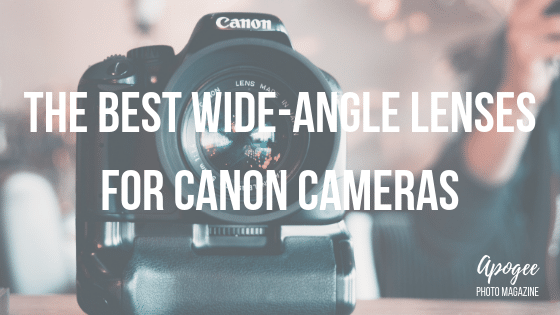

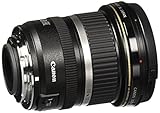
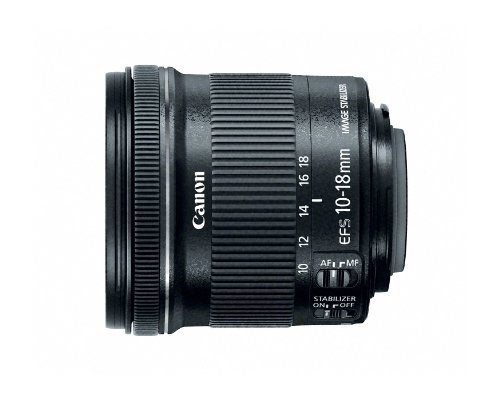




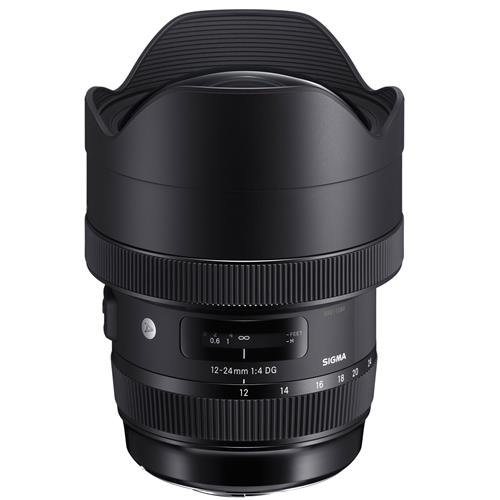


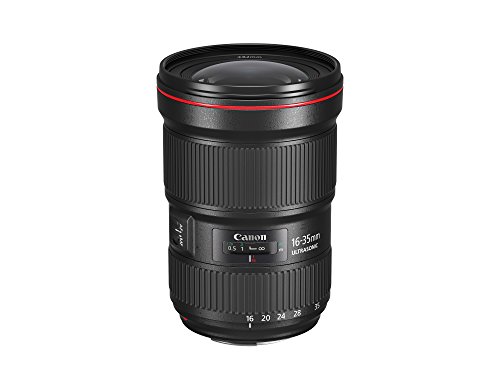







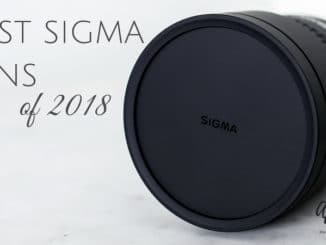
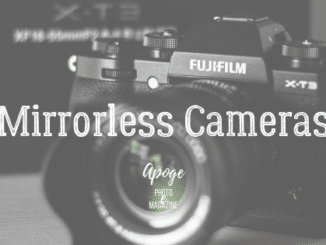
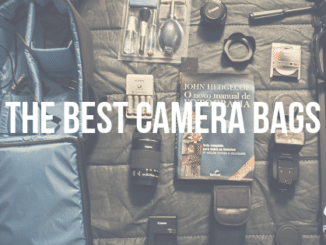
Leave a Reply